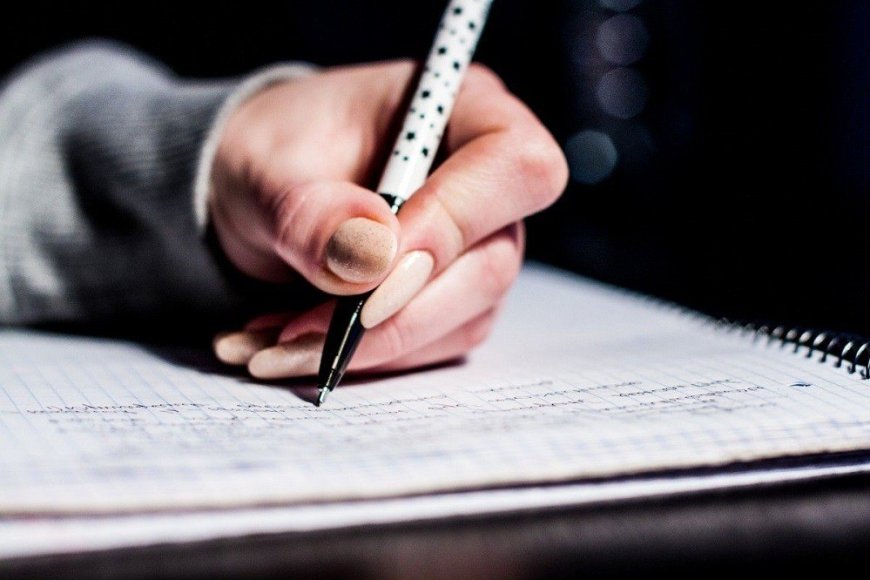Dysgraphia - how to deal with it?
Dysgraphia is, next to dyslexia and dysorthography, a learning disorder that affects not only children, but also adolescents and

Dysgraphia is, next to dyslexia and dysorthography, a learning disorder that affects not only children, but also adolescents and adults. The handwriting of people struggling with this condition is illegible, which makes them experience many difficulties in everyday life. Find out what are the causes, symptoms and treatments for dysgraphia.
Dysgraphia - what is it?
One of the most common causes of problems at school among children and adolescents is dyslexia, dysorthography and dysgraphia. The latter is defined as "partial or complete loss of writing skills due to impairment of visual and auditory functions or micro damage to the central nervous system". In other words, dysgraphia is an illegible writing that not only parents and teachers have a problem with deciphering, but also the child himself. It is worth emphasizing that this problem is not related to the intelligence of the student, as they often achieve high results in other fields. Their development is normal in all other respects.
Dysgraphy - causes
The causes of dysgraphia are most often related to motor disorders associated with incorrect hand operation, for example too much pressure on the pen, incorrect writing habits or high muscle tension. It can also be the result of micro damage to the part of the brain that is responsible for writing skills. In rarer cases, it is associated with impaired mental development. It also accompanies ADHD and autism.
Dysgraphia - symptoms
Symptoms of dysgraphia in children are unsightly writing that cannot be read. Its distinctive features are:
- different case of letters within one word;
- Stepping out of line;
- "Trembling" letters, written with an uncertain hand;
- No diacritics and punctuation marks;
- The blending of the written text into a whole;
- Malformation of letters;
- Tilt letters once to the right, once to the left;
- Problems with distinguishing between upper and lower case letters;
- Omitting certain words, endless sentences.
A child who struggles with dysgraphia avoids the tasks of writing and drawing. He often holds the pen or pencil incorrectly and strains the hand muscles very tightly. His attention is focused on the act of writing and therefore he does not understand the meaning of sentences. Most often he gets tired of typing quickly and easily loses his motivation to work. Usually he says aloud what he wants to write down.
Must Read: Integration classes “ is it worth enrolling a child in it?
In turn, dysgraphia in adults and adolescents is manifested by problems with transferring thoughts to paper with incorrect grammar and syntax, difficulties with understanding what has been written, as well as a discrepancy between what a people knows and what he is able to write down.
Treatment of dysgraphia - which treatment will be the best?
How to help a child, teenager or adult who is struggling with dysgraphia? The diagnosis and rapid implementation of the therapy is extremely important in this case. Dysgraphia is diagnosed by a school pedagogue or a psychologist, and then offers treatment to overcome dysgraphia. Manual exercises, consisting of painting, writing, playing with modeling clay, pasting, sorting beads, drawing lines, connecting points, are the key to success. The therapy also uses graphomotor exercises, the purpose of which is to train the muscles of the arms and hands, e.g. drawing eights in the air, performing arm circles or maneuvering the fingers. A child with dysgraphia may also be helped by practicing tweezers, to which various skill games, pieces, clothes clips and others are used.
As with other learning disorders, untreated dysgraphia can affect a child's psyche (e.g. development of school phobia) and their adult life.
Dysgraphia and Matura exam
Students with dyslexia, dysgraphia and other learning disabilities are entitled to adapted exam conditions, as long as they have the opinion of a psychological and pedagogical counseling center. If the handwriting is illegible and makes it difficult to evaluate the correctness of the tasks, students can write the work on the computer.
